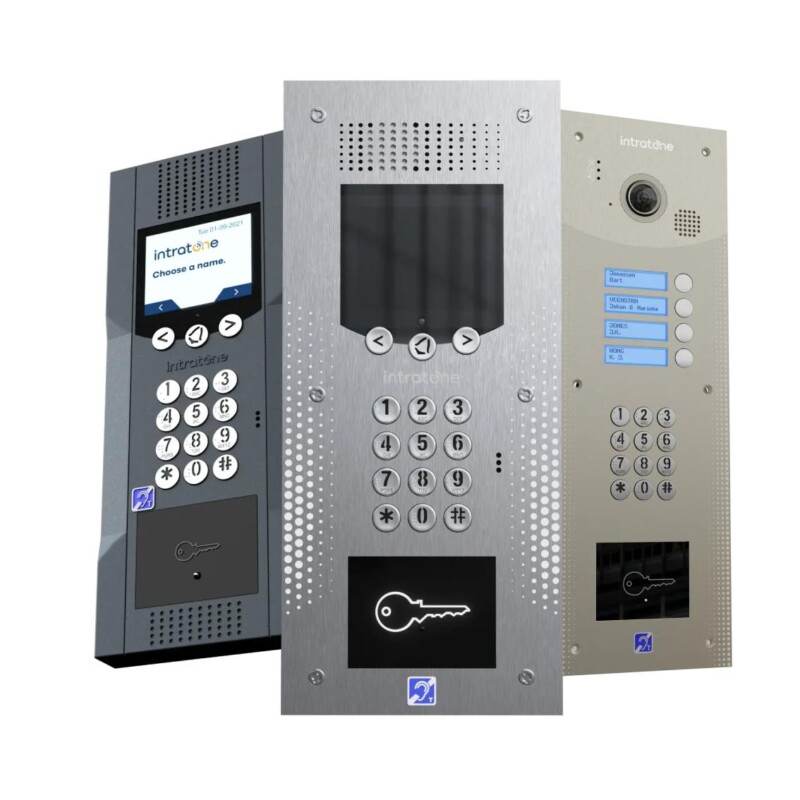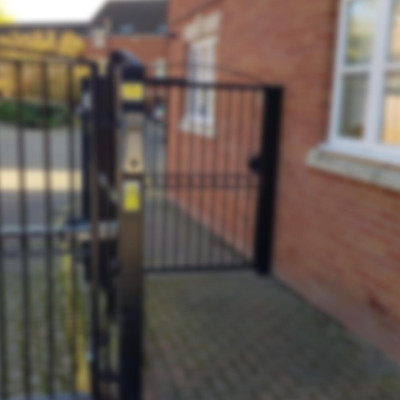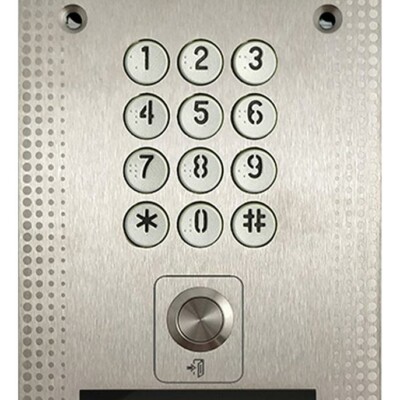Wireless Wonders vs. Wired Wonders
September 11, 2024
Explore the cost-effectiveness of wireless vs. wired intercom and access control systems for rental properties, including installation, maintenance, scalability, security, and integration with intercoms and other security features. Make an informed decision for your property.

The Battle of Cost-Effectiveness in Intercom and Access Control Systems
Setting the Stage for the Ultimate Showdown
In today’s rapidly evolving world of technology, property managers are faced with the decision of whether to choose a wireless or wired intercom and access control system for their rental buildings. This blog post aims to explore the cost-effectiveness of both options, helping you make an informed decision. So, buckle up and get ready for the ultimate showdown between wireless wonders and wired wonders in the realm of access control systems.
Round 1: Understanding Wireless Intercom and Access Control Systems – The Invisible Protectors
Wireless intercom and access control systems operate using radio frequency technology, eliminating the need for physical wiring. The main advantage of this system is its ease of installation and flexibility. Wireless intercom and access control systems have become increasingly popular in recent years, offering a range of benefits that make them an attractive option for property managers.
In addition to being easy to install, wireless systems also offer the advantage of being easily expandable. This means that as your rental property grows, you can simply add new doors or entry points to the system without the need for extensive rewiring. Furthermore, wireless systems often integrate seamlessly with other smart devices, such as intercoms and security cameras, making them an excellent choice for creating a cohesive and comprehensive security solution.
Round 2: Understanding Wired Intercom and Access Control Systems – The Steadfast Sentinels
Wired intercom and access control systems, as opposed to wireless ones, have been the go-to choice for property managers seeking a secure and dependable solution for their rental properties. These systems necessitate physical connections between the control panel and each door or entry point, which are perceived to be more reliable and secure as it is derived from being hardwired.
Notably, wired systems exhibit resistance to potential interference from other wireless devices, ensuring that their performance remains unaffected by factors such as radio frequency interference or signal strength. Furthermore, these systems often support a greater number of entry points and boast quicker response times, making them a favored option for larger rental properties. It is worth mentioning, however, that this advantage may not extend to systems utilizing roaming technologies. Which makes it a very good alternative for wired solutions achieving the same goals.
Round 3: Installation Costs – The Price of Protection
When contemplating installation costs of wireless and wired access control systems, consider all expenses including materials, labor, and any necessary building adjustments. Typically, wireless systems are more economical to install, since they eliminate the extensive wiring and labor hours associated with wired ones.
Contrary to the misperception, initial costs for a wireless system might not be higher than that of a wired one. This is attributed to the fact that tenants can utilize their existing smartphones or landlines as part of the system, thereby eliminating the need to purchase specialized equipment like wireless intercoms and access control panels. Furthermore, not requiring access to each tenant’s flat simplifies installation and reduces maintenance costs. It should be noted, wireless systems may need periodic battery replacements, contributing to the total cost of ownership. However, these minor expenses are often overshadowed by the myriad benefits and savings driven by the ease of installation and system flexibility.
Round 4: Maintenance and Operational Costs – The Long-Term Commitment
While both wireless and wired intercom and access control systems require regular maintenance, the nature of their upkeep and associated costs can differ significantly. Wireless systems typically require less maintenance, as they do not have the physical wiring that can be prone to damage or wear over time. This can result in lower long-term maintenance costs for property managers.
On the other hand, wired systems may require more frequent maintenance, as their physical connections can be more susceptible to damage from environmental factors or general wear and tear. Additionally, the cost of maintaining a wired system may increase over time, as the need for repairs or replacements becomes more likely.
Round 5: System Scalability and Flexibility – The Growth Factor
Scalability and flexibility are important factors to consider when choosing between a wireless and wired intercom access control system, as they can greatly impact the overall cost-effectiveness of your chosen solution. Wireless systems are generally more scalable and flexible, as they can be easily expanded or reconfigured to accommodate changes in your rental property.
For example, if you need to add a new entry point or door to your property, a wireless system can often be easily updated to include the new access point without the need for extensive rewiring. This can save you both time and money in the long run. In contrast, expanding a wired system may require significant rewiring and labor costs, making it a less flexible option for growing rental properties.
Round 6: Security and Reliability – The Trust Factor
When evaluating the cost-effectiveness of wireless and wired access control systems, property managers must also weigh the importance of security and reliability in their decision-making process. Wired systems are often considered more secure and reliable, as their hardwired connections are less susceptible to interference or hacking.
However, wireless systems have come a long way in recent years, with many offering advanced encryption and security features to protect against potential threats. Additionally, wireless systems can often provide real-time monitoring and alerts, allowing property managers to quickly address any issues that may arise. This will end up in less hassle and ‘headaches’ for property managers.
Round 7: Integration with Intercoms and Other Security Features – The Power of Synergy
A comprehensive security solution for rental properties often includes more than just access control systems. Intercoms, security cameras, and alarm systems can all play a crucial role in keeping your property and its occupants safe. As such, it’s important to consider how well each access control system integrates with these additional security features.
Wireless intercom and access control systems often have an advantage in this area, as they can easily integrate with a wide range of smart devices and security systems. This can create a seamless and cohesive security solution for your property, making it easier to manage and monitor. In contrast, wired systems may require additional equipment or modifications to integrate with other security features, potentially adding to their overall cost.
Round 8: Aesthetics and Tenant Appeal – The Beauty of Security
While cost-effectiveness is an important consideration, property managers should also consider the aesthetic appeal and tenant satisfaction associated with each intercom and access control system. Wireless systems often have a more modern and sleek appearance, which can be an attractive selling point for potential tenants.
Additionally, wireless systems can offer a greater degree of convenience for tenants, as they can often be controlled remotely via smartphones or other devices. This can be a significant factor in attracting and retaining tenants, ultimately contributing to the overall cost-effectiveness of your chosen intercom and access control system.
Round 9: Structural Integrity and Safety Considerations – The Hidden Costs
When considering the installation of wired intercom and access control systems, an often overlooked factor is the potential impact on the structural integrity of your property. The process of installing hardwired systems typically involves drilling into walls to accommodate the necessary wiring. This not only affects the aesthetic appeal of your property, but it could also potentially weaken the structure, making it less resistant to unforeseen incidents like fires. The likelihood of this depends on the building’s architecture and the extent of the drilling required.
Additionally, in older buildings, there’s a risk that drilling into walls may disturb asbestos-containing materials, if present. Asbestos exposure is linked to serious illnesses, which adds another layer of complexity and cost to the installation process due to the safety precautions required. These factors could potentially escalate the overall cost and decrease the perceived cost-effectiveness of wired systems. Therefore, it is crucial to consider these hidden costs and safety issues when choosing an intercom and access control system for your property.
By taking a comprehensive view of the costs and effects of your chosen system, including often overlooked elements like structural integrity and safety, you can make an informed decision that ensures the security, cost-effectiveness, and long-term viability of your access control solution.
The Final Verdict: Choosing the Champion
Ultimately, the most cost-effective choice for your rental building will depend on your specific needs, preferences, and budget, as well as the unique characteristics of your property. By carefully considering the various factors discussed in this blog post, property managers can make an informed decision that best suits their needs and maximizes the cost-effectiveness of their intercom and access control system.





